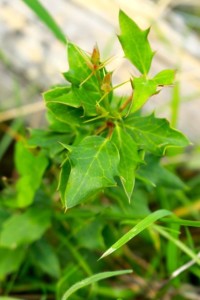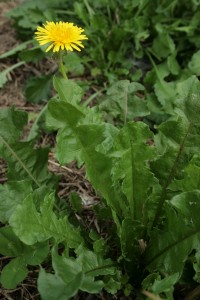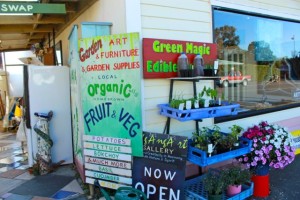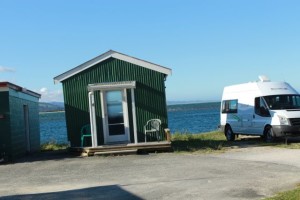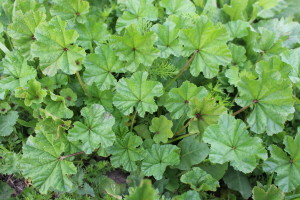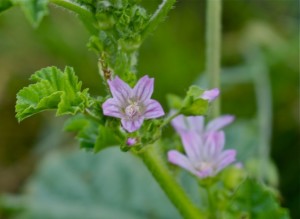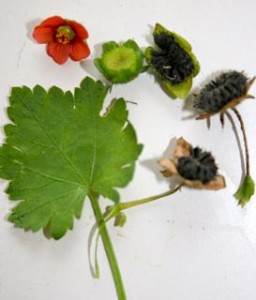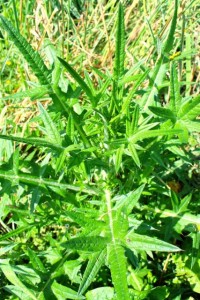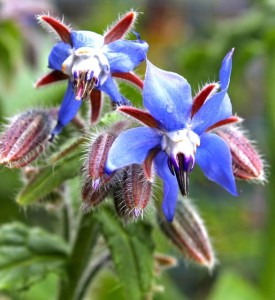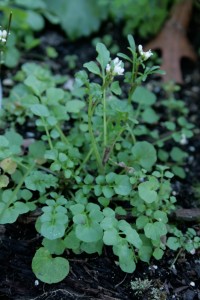Barberry Berberis glaucocarpa made its first impression on me as a painful thorn in the middle of my foot and the long needle used to get it out, when I was about 8 years old playing barefoot near a hedge on our farm at Kakariki in the Wairarapa. It’s been many decades since then and I’ve recently discovered that besides being a prickly menace, it is actually a very medicinal plant! Read more
Peaches & Weeds Smoothie and Dandelions Help Prevent Cancer
I recently came across some interesting research revealing how dandelion, that plant with golden yellow flowers, many try to get rid of in their lawns, is a potent cancer fighting medicine.
Dandelions have long held a top spot in Traditional Chinese Medicine (TCM) as a remedy for digestive upset, inflammation, and kidney disease, being boiled nicely into a healing tea. More recently, dandelion root has been a focus of study for its ability to improve liver and gallbladder function, as well as stimulate appetite. Researchers at the University of Windsor in Canada proved that a potent form of dandelion root extract killed leukemia, melanoma, and pancreatic cancer cells in lab mice. Human clinical trials are now taking place to evaluate how the dandelion root extract might help in treating blood-related cancers, including lymphoma and leukemia.. See original article here
However, we can avoid needing an extract to heal cancer by preventing it in the first place. Regularly Read more
Adventures in Golden Bay
Rather than featuring a plant, this post is about my trip South. I’ve recently come back from a fortnight visiting Collingwood, Nelson and Christchurch where I ran workshops on Wild Edibles, visited old friends, made wonderful new friends and did some Wwoofing (Working on Organic Farms in exchange for board). One of my old friends NgAngA (who by the way is an amazing artist) based now in Collingwood and who organized two wild edible workshops back in November 2014 when he lived in Takaka. He kindly sells my books from his gallery and even has organic produce for sale next to his gallery.
I’d not spent time in Collingwood before but it is a quaint little seaside town. I stayed in a tiny cabin in the only camping ground on its own little peninsula surrounded by sea, located just down the road from NgAngA’s art gallery. I didn’t have much food with me so decided to go foraging. I Read more
Mallow – mellow and soothing
The mallow family contains over twenty edible species of herbaceous plants that can be annual, biennial or perennial. A number are considered weeds while others like hollyhocks and hibiscus are treasured garden plants and marsh mallow is a well known healing plant. All contain large amounts of mucilage which makes them uniquely special as food and medicine. The genus name Malva is Greek meaning soft or soothing, which refers to the mucilage and the recorded history of using mallow goes back through antiquity. So it has been around a very long time!
Some of the weeds you might recognize in this family are dwarf mallow (Malva neglecta), tree mallow (Malva dendromorpha) a biennial shrub which grows up to 2 m tall and, creeping mallow (Modiola caroliniana) a mat forming perennial ground cover.
Mallows grow all over the world on neglected, bare ground around the edges of gardens, walkways, and creeping mallow grows in lawns. Before I knew creeping mallow was edible I cursed it because it forms a matt, putting down roots at the
Thoughts on Thistle
Scotch thistle (Circium vulgare), Californian thistle (C. arvense) and Nodding thistle (Cardus nutans)
Have you ever really looked at a thistle plant? Take off the “invasive” and “shouldn’t be there” glasses, and for a moment turn on curiosity. Thistle design is amazing, the leaves are deeply lobbed with sharp spines covering the edges and tops of the 3D leaves, that make it impossible to touch from above. On most thistles though the back vein is smooth with soft hairs and free of prickles and an ideal place to grab when harvesting, for all parts of the thistle are edible, hold that thought. Read more
Nipplewort
Nipplewort – Lapsana communis
You have to agree this plant has a weird name. If it could it would probably change it. There are two reasons for the name. One is that the seed capsules resemble a nipple in shape and secondly being an astringent plant it probably helped heal chapped nipples or breast ulcers.
An annual you’ll find nipplewort flourishing with new growth now in spring. It forms a rosette of leaves like its cousins in the Asteraceae family, e.g., dandelions. Read more
Growing ALL your own Food
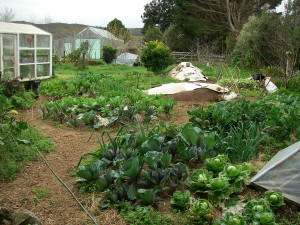 In this post Wilma and I begin a conversation about growing our own food. Wilma says “I never gave growing all our own food much thought until John and I started doing it and John asked me to make a list of what I wanted and how much.
In this post Wilma and I begin a conversation about growing our own food. Wilma says “I never gave growing all our own food much thought until John and I started doing it and John asked me to make a list of what I wanted and how much.
I love cauliflower so that was the first on my list with the question how many? Well not one to do myself short I wanted at least one cauliflower a week, so that would make 52 cauliflowers minimum!!!
The second vegetable was cabbage for sauerkraut. Oh dear and you can feel what is coming; 3 cabbages for one week sauerkraut supply, that is three times 52 which is 156 cabbages and I felt immediately overwhelmed. And I was only at the stage of making the list. Read more
Borage
Borage – Borago officinalis
Loved by bees this plant is both a weed and one we want. If you don’t have it, direct sowing of the seeds in spring and summer is best in its final position, as it doesn’t like having its long tap root disturbed. Or sow the seeds in individual pots and
transplant them as soon as large enough and hardened off. It self sows once established and growing wild has adapted to life all over New Zealand originating from central and southern Europe.
Borage is distinguished by large oval or egg-shaped rough, thick, hairy leaves with sap smelling and tasting like cucumber. Read more
Bittercress a warming winter weed
Bittercress Cardamine hirsuta
I love this little compact, rosette shaped annual with lobed leaves, small white flowers and upright seed pods that explode, flinging the seeds far and wide when ripe and you touch them, hence one of its names ‘shot weed or ‘flick weed’. Other names are ‘lambs cress’, ‘spring cress’, and ‘hairy bittercress’.
It grows all over New Zealand and is fond of popping up in container plants, to the annoyance of nurserymen. It also flourishes in damp gardens, driveways cultivated or disturbed soil. It grows and goes to seed within a few weeks enabling it to have several generations in a year, making it prolific.
Guest Post from Wilma
Hi, I am Wilma.
I am Julia’s friend. We met at her workshop and we clicked. Unfortunately I now live in Kaikohe, Northland and I miss her. There is so much to learn, so many questions to ask my friend. Sure I have books and hers but somehow in my eyes the real plants never look the same as in the picture. Yes, I have made an appointment with an optometrist but somehow I don’t think new glasses will make a difference.
It is no surprise that hearing about edible weeds excited me. John and I are totally committed to feeding ourselves from the garden but having moved around so much, establishing a garden takes time. I know how to eat Cavolo Nero in a million different ways because that veggie was always the fast growing one but when the weed lover made it clear to me that there was always more to eat than just my Cavolo Nero I loved Julia on the spot.
